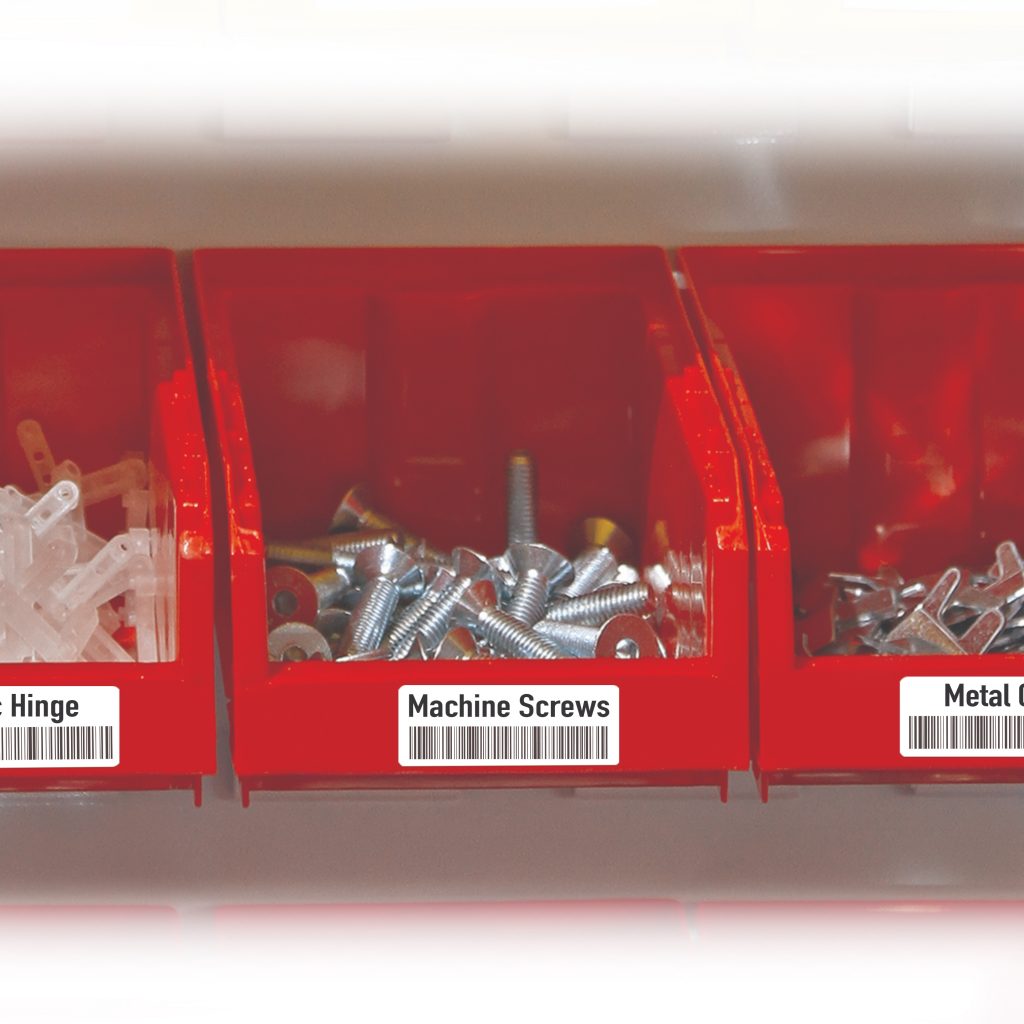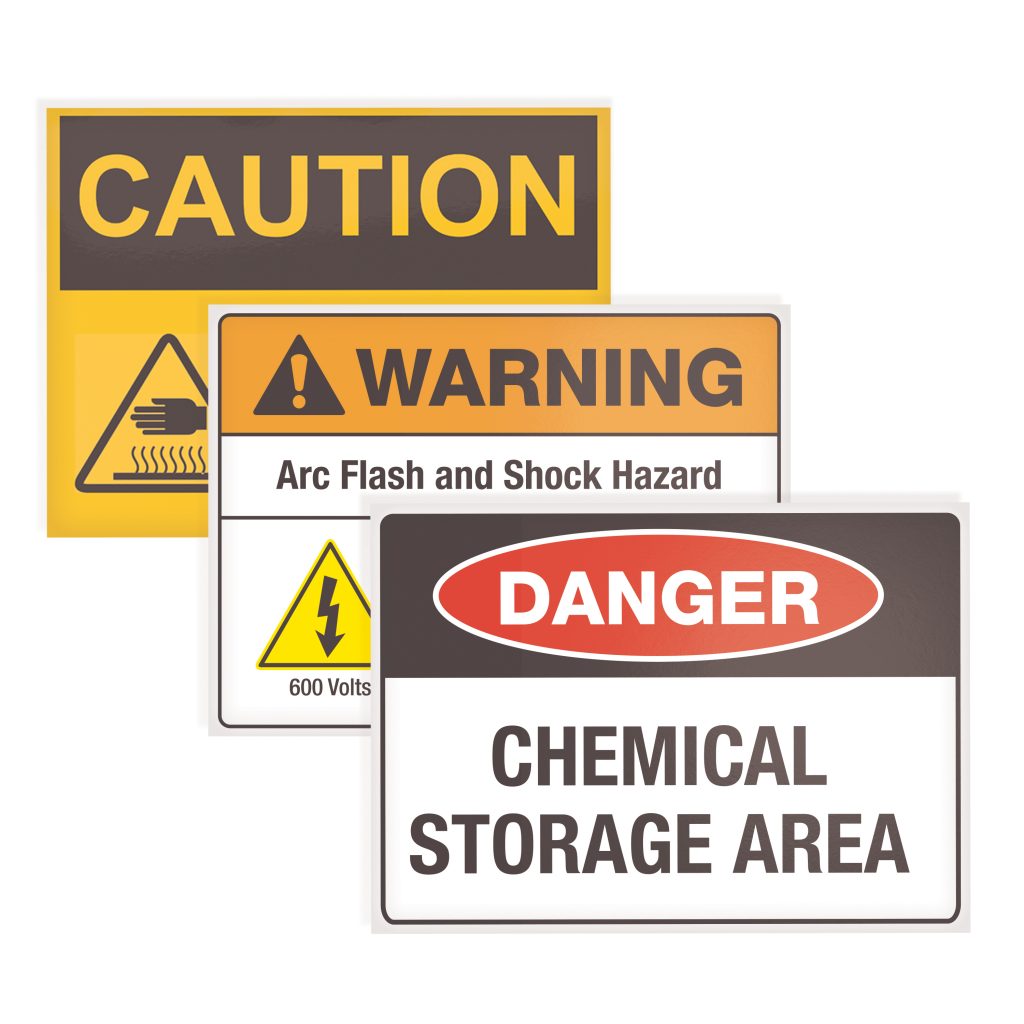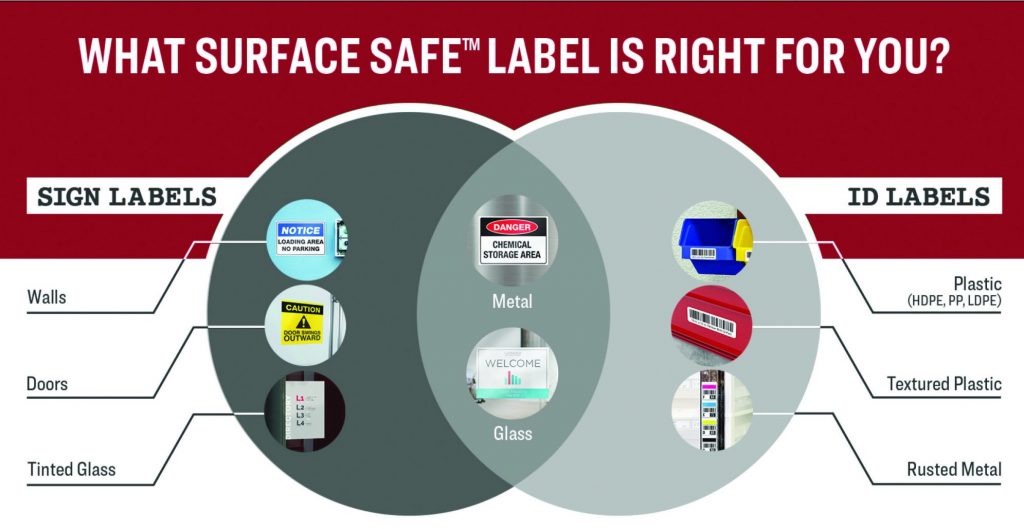From the manufacturing floor to the warehouse, the 5S process of organizing the workspace to efficiently achieve consistent quality output is one of the foundational principles of lean manufacturing.
With each S (Sort, Set in order, Shine, Standardize, and Sustain) accounting for a separate stage of the 5S approach, now a 6th S – Safety – is being integrated into the process. This emphasis is helping to ensure that safety is fully and consistently practiced, and new options in safety signs and labeling are helping to further optimize the process.
“In 6S programs, signs play a key role in safeguarding the workplace and enhancing productivity by highlighting best practices and preventing or reducing accidents and injuries,” says Tina Huff, Group Product Manager at Avery Products Corporation, a commercial and industrial label manufacturer. “Such signs also play a vital role in keeping employees properly trained and staying OSHA or ANSI compliant.”
Utilizing safety and identification labels on a variety of workspaces and production/warehouse equipment can be essential to establishing the safest operating instructions, procedures, processes, checklists and scheduling. The right label can make a big difference, and using one not designed for the job at hand can create problems down the road.
6S Fundamentals
Site supervisors and warehouse managers familiar with the 5S process will appreciate how the 6S approach reinforces safety throughout all of the previous stages.
Furthermore, new safety labeling options are now making it easier to print and post signs all over the facility, even when unique situations arise. As such, whenever information must be changed or updated, labeling that sticks securely yet removes cleanly can help to optimize the ongoing, iterative 6S process, particularly in terms of safety.
 Sort
Sort
The first 6S stage, Sort, removes clutter and unneeded items from the work area. This leaves just the parts, tools, and machines necessary for daily use on the manufacturing or warehouse floor.
Labels can be used in this stage to roughly sort and identify items that are used less frequently, which may be moved to an alternate location for occasional access, as needed.
Set in order
The second stage, Set in order, locates parts, people, tools, and equipment in the most efficient, ergonomic positions, so operators do not waste time or effort searching for needed items. Utilizing labels, along with tool shadow boards, and other visual identifiers can help to ensure that everything necessary on the manufacturing floor or in the warehouse is properly placed and ready to use.
“To improve workplace efficiency, sign and identification labels can be integrated to clearly identify and classify parts, tools, and equipment,” says Huff. “The goal is to make things easy to find, so everything has a home.”
Shine
The third stage, Shine, ensures the workplace stays free of clutter, grime, and malfunction to prevent more serious work breakdowns or slow downs. In this process, cleaning as well as inspecting through cleaning is critical. However, insufficiently durable labels can become torn or otherwise unreadable, which is a particular problem with barcode labels.
“To reliably perform through the Shine stage, it is important to use labels that are designed to withstand daily wear/tear, dirt, grease, oil, chemicals, and wash downs while providing good barcode readability,” says Huff.
Standardize
The fourth stage is standardization, which systematizes the most efficient work methods with clear standards. Utilizing schedules, checklists, and standard operating procedures are a key part of this process.
“Placing sign labels on walls or equipment in the work area is a good way to increase their visibility,” says Huff. “This can provide a recurrent reminder of standard operating procedures to employees, so no one can say ‘I didn’t see it.’”
Sustain
The fifth stage trains and maintains the company’s standards until they become a habit for everyone involved. Posting sign and identification labels as close as possible to the actual work being done can be an important way to reinforce these standards until they are consistently followed.
“Constant reminders to employees in the form of sign labels will help to sustain the 6S principles they need to follow,” says Huff. “Because research shows that people don’t ‘see’ signs after awhile, regularly updating the signs can help to refocus employee attention and behavior.”
 Safety – The Sixth S
Safety – The Sixth S
In 6S, safety is emphasized in every aspect of the lean manufacturing process. This ranges from plant logistics to equipment positioning/operation to the correct handling of parts/product to the wearing of safety gear.
In warehouses, accurate labeling to properly identify changing inventories of parts in bins, totes, racks, shelving, or returnable containers can also enhance safety and efficiency. By improving barcode readability and inventory accuracy, this can minimize the need for employees to look for product, which reduces forklift and employee traffic on the warehouse floor.
Because 6S is a continuous process, a highly involved organization will reorganize or improve its processes throughout the year, as well as accommodate inevitable changes in data, format, and safety regulation.
As such, easily removing old labels and printing custom, updated ones can be a vital issue. Otherwise, employees can waste time scraping old labels off, using hair dryers, or even razor blades. They may be reluctant to update labels if it is difficult to get the old ones off, so may make do with sub-standard situations.
The ideal solution would be signage and labels that are easy to install, durable enough to endure harsh conditions, yet comes off easily when necessary, leaving no trace.
“Industrial labels used as signage or for warehouse part/product identification must be more durable than those used in an office, but also should remove cleanly when they need to come down,” says Huff. “For us, the key to accomplishing this was developing an adhesive that holds well but can be removed when needed. Achieving that balance is harder than it sounds.”
 As the result of this effort, new Avery has developed an exclusive and proprietary range of Surface Safe labels for specific applications that deliver the benefit of durability plus clean removal from surfaces, without damage. Surface Safe Sign Labels are specially engineered to stick securely yet remove cleanly without damage or residue from painted walls, doors, glass and metal.
As the result of this effort, new Avery has developed an exclusive and proprietary range of Surface Safe labels for specific applications that deliver the benefit of durability plus clean removal from surfaces, without damage. Surface Safe Sign Labels are specially engineered to stick securely yet remove cleanly without damage or residue from painted walls, doors, glass and metal.
Surface Safe ID Labels, on the other hand, are made specifically for warehouse environments, function similarly when applied and cleanly removed from a wide variety of warehouse surfaces including metal racks, shelves and cabinets, and all major brands of distribution totes and bins.
These “labels used as signs or warehouse identification” are made of durable, industrial-grade material that resists water, chemicals and even abrasion. Available in a variety of sizes, they print easily on standard laser or inkjet printers, opening a world of possibilities for custom, do-it-yourself signs and warehouse labels.
Unlike standard office labels with a paper substrate, the topcoat of these industrial labels is waterproof and chemical resistant, while its polyester substrate is a durable, scuff and tear-resistant film.
These qualities are ideal for safety-related signage and warehouse labeling, as mandated by regulation or required by company policy.
For instance, facility managers and safety officers or engineers will want signs compliant with OSHA 1910.145 (Specifications for Accident Prevention Signs and Tags) and ANSI Z535.4 (Product Safety Signs and Labels).
Although standardized safety signs can be purchased out of catalogues, there is often a need to modify or customize mandated signage as conditions or formats change.
On-demand printing solutions have traditionally required a large upfront investment of thousands of dollars, including a specialized sign and label printer, software, labels, and ribbons.
In response, industry innovators such as Avery Products Corporation have developed a simplified, flexible approach using standard laser and ink jet printers. The company’s free online Design and Print Software enables customizable printing utilizing OSHA/ANSI compliant templates, as well as 5S/6S templates.
Employees can create and print their own informal, official, or compliant labels from pre-designed templates or create them step-by-step on demand at their desk. Most employees find the process intuitive, since it resembles creating an office document from pre-designed templates.
To accommodate warehouse settings, the software’s barcode generator makes it easy to add text, graphics, serialized numbers or barcodes in a few steps. The combination of a bright white label material with superior ink/toner anchorage further enables accurate barcode scanning, even at extended distances.
With all the signage and part labels used throughout manufacturing and warehouse settings, the ability to conveniently print new sign and/or warehouse identification labels in minutes, while being able to cleanly remove the old, will go a long way toward keeping these facilities safely up to date without the hassle, mess or cost.


















